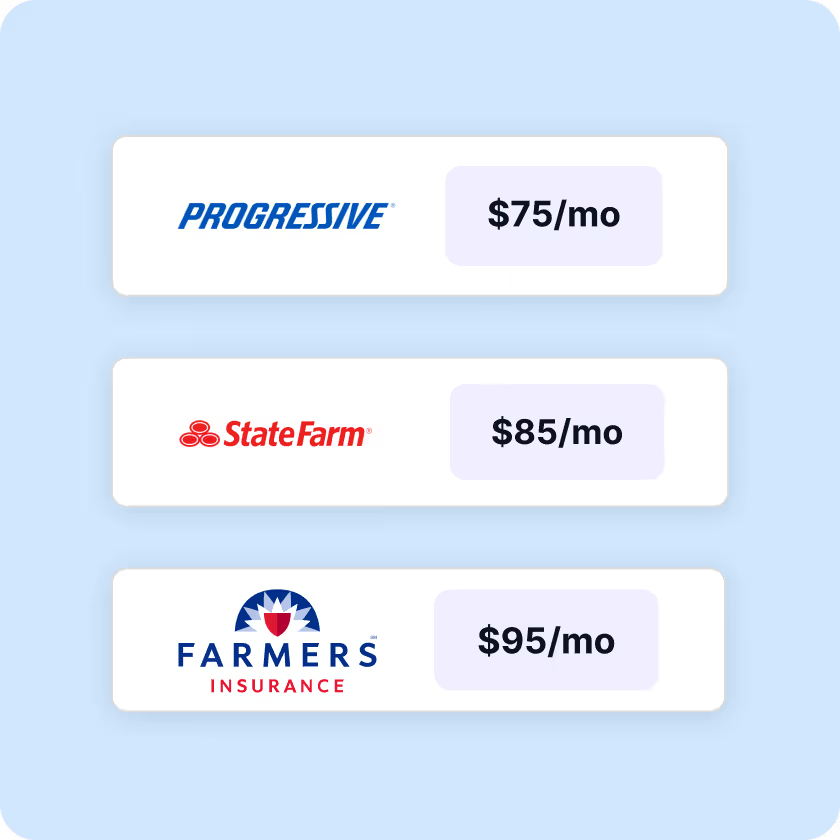
Kudos has partnered with CardRatings and Red Ventures for our coverage of credit card products. Kudos, CardRatings, and Red Ventures may receive a commission from card issuers. Kudos may receive commission from card issuers. Some of the card offers that appear on Kudos are from advertisers and may impact how and where card products appear on the site. Kudos tries to include as many card companies and offers as we are aware of, including offers from issuers that don't pay us, but we may not cover all card companies or all available card offers. You don't have to use our links, but we're grateful when you do!
The Do’s and Don’ts of Store Credit Cards in 2025
July 1, 2025


Tempted by a store’s credit card offer at checkout? You’re not alone. Store credit cards promise big savings or exclusive perks – but if used incorrectly, they can cost you more than you bargained for. In this 2025 guide, we break down the essential do’s and don’ts of store credit cards so you can shop smarter and avoid costly mistakes.

Do: Consider a Store Credit Card If You’re a Frequent Shopper
If you truly love the store and shop there often, their credit card could be worthwhile. Many store cards offer special perks for loyal customers, like extra discounts, birthday coupons, or advanced access to sales. For example, the Target RedCard gives 5% off every Target purchase plus extended return periods. That can add up to significant savings for regular shoppers. Do take advantage of these loyalty rewards if you’re already spending a lot at that retailer.
In 2025, some store-branded cards have even improved their rewards to keep customers engaged. Just make sure the card’s benefits align with your habits (e.g. a card that offers free shipping is great if you do most shopping online).
Don’t: Sign Up Just for a One-Time Discount
On the flip side, don’t open a store credit card on impulse during a single shopping trip. It’s easy to get blinded by a “20% off today” deal at the register, especially around the holidays. But that one-time discount might be the only meaningful benefit you get, while the card stays with you much longer. Retailers know the upfront savings are enticing – it’s how they get many to apply spur-of-the-moment.
Resist the pressure if you wouldn’t consider the card otherwise. A $50 discount is not worth potentially high interest charges later or a hit to your credit score for an account you didn’t really need. Don’t let a five-minute decision at checkout turn into a financial burden. Instead, ask if you can get the discount by signing up for the store’s email or loyalty program – often you can get coupons without opening a credit line.
Do: Pay Your Store Card Balance in Full Each Month
Treat a store credit card just like any other credit card: pay off the balance in full and on time. This is a critical “do” to follow. Why? Store credit cards notoriously come with very high interest rates, often around 25–30% APR on average. In fact, store-only cards (closed-loop cards) had an average ~30.24% interest rate recently, much higher than general credit card averages. If you carry a balance, those interest charges will quickly wipe out any savings or rewards you earned.
For instance, imagine you saved $30 on a purchase by using a store card, but then you carry that $300 balance and incur 29% interest for a few months – you’ll pay far more than $30 in interest. Don’t carry a balance. Set up auto-pay reminders and use the card only for amounts you can pay off when the bill comes. Paying in full not only avoids interest; it also helps build your credit (more on that later).
Don’t: Max Out Your Store Credit Line (Mind Your Utilization)
Store cards often come with low credit limits, sometimes just a bit above your purchase amount. It’s not uncommon to get a $500–$1000 limit on a new store card. This means if you spend a few hundred dollars, you’ve used a large chunk of your available credit. A high credit utilization ratio (balance-to-limit) can hurt your credit score. Credit experts recommend staying under 30% utilization, but lower is better. Don’t max out your store card or even use more than half your limit if you can help it.
For example, if your new electronics store card has a $800 limit, avoid putting a $800 TV on it – that’s 100% utilization, which could ding your credit score until it’s paid down. Instead, do use it for smaller purchases periodically (and pay off immediately) to show activity without spiking your utilization. This approach helps you build credit positively, as your on-time payments get reported without the negative of a high balance.
Do: Take Advantage of Special Financing Carefully
A big draw for some store cards is “special financing” on large purchases – e.g. “No interest for 12 months” deals on furniture or electronics. This can be useful: it’s essentially free financing if you pay it off within the promo period. If you need a pricey item and can budget to pay it off in, say, 6–12 months, a store card’s 0% offer can save you money compared to putting it on a regular card and paying interest. Do have a payoff plan though. Many store financing offers in 2025 still use deferred interest – meaning if you don’t pay in full by the end of the promo, you’ll be charged all the interest from the original purchase date. That can be a nasty surprise.
For example, if you buy a $1,000 appliance on “12 months no interest” but have $100 left after 12 months, you could suddenly owe all 12 months of interest, perhaps hundreds of dollars. So, if you use these offers, mark your calendar and divide payments so it’s fully paid by month 12 (or earlier). Used correctly, special financing is a good tool; used carelessly, it’s a don’t that leads to a big interest charge.
Don’t: Forget That Store Cards Affect Your Credit
Just because it’s a “store” card doesn’t mean it’s any different on your credit report. Opening a store credit card results in a hard inquiry on your credit (which can shave a few points off your score temporarily) and adds a new account to your credit history. If you open several store cards in a short time, those inquiries and new accounts can compound and potentially make other lenders hesitant (for instance, too many new accounts could even impact chances at other credit cards – known in the hobby as things like the Chase 5/24 rule).
Also, as mentioned, high balances on a store card can hurt your credit utilization, and missed payments will absolutely hurt your score just like any credit card. Don’t treat store cards lightly as if they “don’t count.” They do report to credit bureaus. Only open one if you’re prepared to handle it responsibly. The upside: if managed well, a store card can help build your credit over time (since on-time payments improve your score). So it’s a double-edged sword – use it wisely and it’s a do, use it recklessly and it’s a major don’t for your credit health.
Do: Utilize Store Card Perks Alongside Other Rewards
If you do get a store card, maximize its perks. Stack your benefits when possible. Example: Many store cards’ savings can be combined with regular store sales or coupons. If you have a Kohl’s card, you can use Kohl’s coupons plus the card’s extra discounts during promotions. Similarly, Target’s 5% off from the RedCard works on top of sale prices and even on top of the Target Circle app deals. Take advantage of any free shipping offers or exclusive member events.
Also, consider using your store card in conjunction with loyalty programs (most stores allow you to earn loyalty points and use the card discount). These are all “do’s” because they enhance the value you’re getting. You’re essentially stacking rewards – something savvy shoppers do in 2025 to combat rising prices. Just remember, once you leave that particular store ecosystem.
Don’t: Use a Store Card for Anything Other Than Its Store (if it’s closed-loop)
Most store credit cards are closed-loop, meaning you can only use them at that retailer or its partner brands. (Some, like certain Amazon or Walmart cards, are actually co-branded Visa/Mastercard that you can use anywhere – but then their non-store rewards usually lag behind top general cards.) If your card is closed-loop, don’t bother trying to use it elsewhere – it will be declined. Even if it’s an open-loop store card (like the Prime Visa or Costco Anywhere Visa), don’t use it for “everything” by default without checking its rewards. Often, store-affiliated cards have mediocre rewards outside the store.
For example, the Amazon Prime Visa is great for 5% back at Amazon and Whole Foods, but if you use it at a restaurant, you get 2% back – another card in your wallet might earn more on dining. So, do use the right card for the purchase. Pro tip: Use a free tool to help you choose the best card at checkout – which leads us to a bonus “do”.
Do: Use Tech Tools to Maximize Your Rewards (The Kudos Advantage)
Staying on top of which card to use can be a hassle, especially as you juggle store cards and regular credit cards. Do leverage technology to simplify it. For instance, Kudos is a free financial companion that helps you maximize your credit card rewards by tracking hidden perks and suggesting the best card at checkout. It’s like having a personal credit card advisor in your browser. If you have a store card and a general rewards card, Kudos will remind you which one gives you the better reward for that purchase. It can even surface perks you might forget (like free warranties or cashback offers).
This way, you never miss out on rewards – and you don’t have to memorize which card to use where. Kudos is completely free—use code GET20 to get $20 back after your first eligible purchase. This kind of tool is a game-changer in 2025, ensuring you follow all the do’s (maximize rewards, use the right card, pay on time) without breaking a sweat.
Don’t: Ignore the Fine Print (Always Read the Terms)
Finally, a golden rule: don’t toss aside the terms and conditions pamphlet that comes with your new card. It may not be thrilling reading, but skimming it can save you money. Key things to look for: the exact APR, any annual fee (most store cards have none, but double-check), the details of any promotional financing (know the end date!), and any exclusions to the rewards/discount.
For instance, some store cards’ 5% discount might not apply to gift card purchases or certain departments. Or free shipping might kick in only on a certain website. By knowing the fine print, you won’t be caught off guard. If something isn’t clear, ask or look up the FAQ on the store’s credit services site. Do educate yourself about the card’s rules – that’s a responsible step many skip.
FAQ: Store Credit Card Basics and Best Practices
Should I get a store credit card just to save 10% on one purchase?
Generally, no – that alone isn’t a good reason. A one-time 10% discount can be nice, but consider the bigger picture. If you don’t shop at that store regularly, you’re taking on a new credit line (with a high interest rate) for little benefit. You might save $20 today, but if you later use the card and carry a balance, interest could cost more than $20. Only sign up if you plan to use the card’s perks frequently and can manage it responsibly. Otherwise, politely decline the offer at checkout – you can always reconsider later after researching the card at home.
Do store credit cards hurt my credit score?
They can have both positive and negative effects on your credit, just like any credit card. When you apply, you’ll get a hard inquiry on your credit report, which might ding your score a few points temporarily. Also, a new account slightly lowers your average account age. These factors can cause a small score drop initially. On the other hand, if you use the card wisely – keep balances low and pay on time – the positive payment history can build your credit score over time.
One thing to watch is credit utilization: store cards often have low limits, so owing $300 on a $500 limit card is 60% utilization, which can hurt your score until paid off. In summary, a store card can hurt your credit if you max it out or miss payments, but if you keep your spending in check and pay promptly, it can help your credit in the long run.
What’s the difference between a store credit card and a regular credit card?
A store credit card (also called retail card) is usually issued by a retailer in partnership with a bank, and often can only be used at that store or chain (this is called a closed-loop card). It’s meant to reward you for shopping at that store (via discounts or points). A regular credit card (like a Visa, Mastercard, Amex not tied to one store) can be used anywhere and typically offers broader rewards (cash back on any purchase, travel points, etc.).
Some store cards are co-branded with Visa or Mastercard, meaning they can be used anywhere – these blur the line, acting like a regular credit card but with bonus rewards at the sponsoring store. The main differences come down to acceptance and rewards structure. Store cards: use at one store, perks at that store. Regular cards: use anywhere, more versatile perks (often better long-term value). Also, store cards often have higher interest rates and lower credit limits compared to many general cards.
What does “deferred interest” mean on a store card offer?
“Deferred interest” means that interest is accruing in the background during a promotional no-interest period, and if you don’t meet the conditions, you’ll have to pay that interest. For example, a store might offer “No interest if paid in full in 12 months” on a big purchase. If you pay the purchase completely off in 12 months, great – you pay zero interest. But if you have any balance remaining after 12 months (even $1), deferred interest means you now owe all the interest from those 12 months as if the promo never happened. This can be a huge amount. It’s essentially a retroactive charge.
This is different from true 0% APR offers (like some bank-issued cards give) where any remaining balance just starts accruing interest going forward. With deferred interest, the interest was only deferred (postponed), not waived. So always clarify the terms: if it’s deferred interest, be extremely sure to pay off within the promo period. If you do, you’re fine and pay no interest; if you don’t, it can get very expensive.
How many store credit cards is it wise to have?
There’s no magic number, but quality over quantity definitely applies. Each store card is a new credit line to manage, so only get cards for stores where the ongoing benefits truly make sense for you. For many shoppers, having one or two store cards at most – for their favorite retailers – is plenty. For example, you might carry a Target RedCard because you grocery shop there weekly, and maybe an Amazon card if you’re a frequent Amazon buyer. But if you find yourself with a wallet full of store cards you rarely use, it can become hard to keep track of payments, and you gain little.
Plus, each new card can slightly impact your credit. A good practice: periodically review your cards. If you haven’t used a store card in over a year and it has no annual fee, it might just sit open (which is okay for credit length, but watch for inactivity closures). Don’t open cards for every store you visit. Instead, be strategic and stick to those that give you significant value regularly. And remember, a solid general-purpose cashback card can often beat multiple niche store cards for overall savings.

Supercharge Your Credit Cards
Experience smarter spending with Kudos and unlock more from your credit cards. Earn $20.00 when you sign up for Kudos with "GET20" and make an eligible Kudos Boost purchase.
Editorial Disclosure: Opinions expressed here are those of Kudos alone, not those of any bank, credit card issuer, hotel, airline, or other entity. This content has not been reviewed, approved or otherwise endorsed by any of the entities included within the post.





























.webp)
.webp)
.webp)
%20(1).webp)
.webp)
.webp)


.webp)